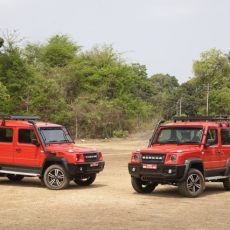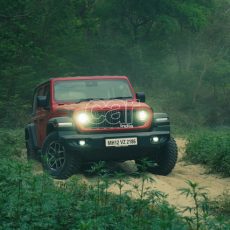 Tata Motors’ Indica Vista has been given a boost, because of which its 1.3-litre diesel engine now produces 90 horsepower. We drove it recently
Tata Motors’ Indica Vista has been given a boost, because of which its 1.3-litre diesel engine now produces 90 horsepower. We drove it recently
“IT’S ALL ABOUT PERFORMANCE.” That’s what the Tata Motors spokesperson kept saying during the presentation of the new Indica Vista D90. A new Vista? Well, not exactly. It’s just a more powerful version of the Vista rather than a whole new car. The D90 stands for the 90 PS version of the FIATsourced 1.3-litre diesel motor. We drove it on the
company’s test-track as well on the streets of Pune in order to find out how the D90 performs.
 Before that a quick look at what’s new in terms of design and features. The D90 looks identical to the regular Vista, but it gets a new set of wheels and a whole lot of badges around to help distinguish it from the normal Vista. Those about sum up the exterior changes. Let’s see what’s different inside.
Before that a quick look at what’s new in terms of design and features. The D90 looks identical to the regular Vista, but it gets a new set of wheels and a whole lot of badges around to help distinguish it from the normal Vista. Those about sum up the exterior changes. Let’s see what’s different inside.
There are noticeable changes, though the feeling of being in a new car is missing, since much of the cabin is still the same. Bits like the seats, dashboard layout, instrument console, cabin space and the steering wheel are all the same. The centre console is new and features two prominent items on it. First is the new infotainment system that includes a navigation system from MapMyIndia. Below this system you will find the new automatic climate control dials. Neat, but we have already seen this in the new Manza Club Class.
 The main change in the new Vista is under the hood. The 1.3-litre diesel with variable geometry turbo is not a new engine for Tata, for this very engine is used in the Manza as well. The power output is 90 PS and the torque output is 200 Nm. Tata Motors claim that the key point of this engine is performance, but it lacks the punch that you would expect of a 90-PS engine. It feels like a sedate engine. I mean it has the power, but it is delivered slowly rather than furiously. The torque starts to kick in early, giving the car a strong bottom and midrange. However, the top-end power doesn’t really make it feel like a 90-PS engine.
The main change in the new Vista is under the hood. The 1.3-litre diesel with variable geometry turbo is not a new engine for Tata, for this very engine is used in the Manza as well. The power output is 90 PS and the torque output is 200 Nm. Tata Motors claim that the key point of this engine is performance, but it lacks the punch that you would expect of a 90-PS engine. It feels like a sedate engine. I mean it has the power, but it is delivered slowly rather than furiously. The torque starts to kick in early, giving the car a strong bottom and midrange. However, the top-end power doesn’t really make it feel like a 90-PS engine.
The D90 is not really a lightweight car. Tata engineers have used around 150 kilos of steel to strengthen the chassis, which has added more weight to the car and that has ultimately hampered the performance and will also reduce the car’s fuel efficiency. If only Tata had kept the weight of the D90 low, maybe the 90 PS of power and 200 Nm of turning force would really have given it a nice performance boost.
 Tata Motors claim that they have improved the handling of the new Vista D90 by tweaking the suspension, though we couldn’t really feel the difference between the ordinary Vista and the D90. It seems that the engineers have not really tweaked the suspension well, because the handling of the D90 felt very similar to the normal Vista’s. It still has the suspension that is on the softer side of things and the ever-present body-roll made itself evident in the very first turn we took. Maybe, we will find the difference about the suspension when we do a complete road test. Otherwise, frankly there is hardly any difference between the handling of the D90 and the normal Vista.
Tata Motors claim that they have improved the handling of the new Vista D90 by tweaking the suspension, though we couldn’t really feel the difference between the ordinary Vista and the D90. It seems that the engineers have not really tweaked the suspension well, because the handling of the D90 felt very similar to the normal Vista’s. It still has the suspension that is on the softer side of things and the ever-present body-roll made itself evident in the very first turn we took. Maybe, we will find the difference about the suspension when we do a complete road test. Otherwise, frankly there is hardly any difference between the handling of the D90 and the normal Vista.
 My initial impressions are that the D90 definitely has a slight increase in power, but the current gearbox and the added weight seem to hamper the delivery of this increased power to the wheels. Tata engineers put a lot of emphasis on the performance bit of the D90, but we would have to wait for a complete road test in order to come to a conclusion in this regard.
My initial impressions are that the D90 definitely has a slight increase in power, but the current gearbox and the added weight seem to hamper the delivery of this increased power to the wheels. Tata engineers put a lot of emphasis on the performance bit of the D90, but we would have to wait for a complete road test in order to come to a conclusion in this regard.
Story: Ravi Chandnani
Photography: Sanjay Raikar




